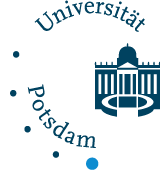Identifying mantle sources and crust-mantle transport mechanisms for metal enrichment in subduction settings: Combined Se isotope and Se-Te systematics in Patagonian mantle xenoliths
The volatile and chalcophile elements selenium (Se) and tellurium (Te) are critical for the development of environmentally-sensitive power-generating technologies. Presently, however, the availability of these elements is limited and they can be only obtained as by-products during copper and gold ore processing. Thus, meting future demand requires to identify the sources of these elements and to understand what processes contribute to their concentration in specific environments. Patagonian mantle xenoliths preserve the record of a protracted history of episodes of melt depletion and refertilization of different volumes of the subcontinental lithospheric mantle (SCLM) beneath South America. Recently, it has been suggested that the SCLM in southern Patagonia may have acted as a “temporal storage” of ore-forming elements that were removed by later upwelling melts in route towards the crust. This project aims to investigate the chalcophile structure, composition, and evolution of the SCLM beneath northern and southern Patagonia. These aims will be achieved by combining major and trace element and Sr-Nd-Pb radiogenic isotope analyses with new analytical techniques that allow the combined determination of Se-Te concentrations and precise Se isotope ratios in rocks very depleted in Se. The results of this project will contribute to a better understanding of the impact of different metasomatic styles in the origin and distribution of chalcophile elements in the SCLM in subduction zones, and ultimately of the factors that control metal transfer from deep mantle sources to the uppermost crust. These results will also allow assessing the potential of Se isotopes as tracers of recycled crustal components in the mantle.
